SUMMARY
This is AI generated summarization, which may have errors. For context, always refer to the full article.
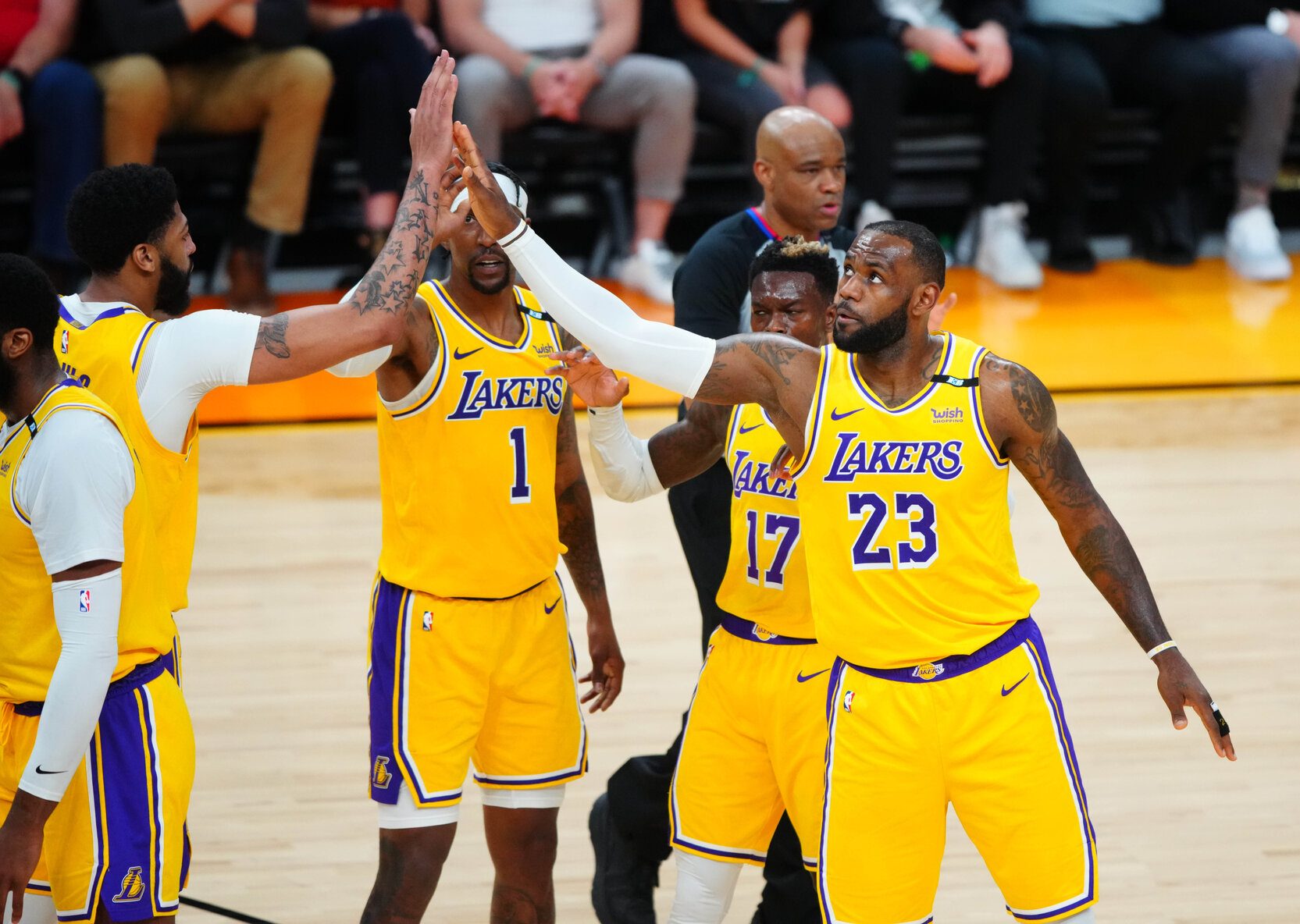
During their Game 2 matchup, the Los Angeles Lakers put up 80 field goal attempts, as opposed to the Phoenix Suns’ 71.
Games aren’t often decided on single-statistic comparisons such as the one above, but if you want to pinpoint one particular comparison, it would be that one. It’s basic math – more field goal attempts equals more chances to score.
The Lakers, to put it simply, had more chances to score. Their sense of urgency on defense to start the game was apparent. They kept the Suns to 47 points in the first half while putting up a defensive rating of 102.2 – more in line with their best-defense-in-the-league identity. They kept the Suns to an effective field goal percentage (eFG%) of 51.5%, even if they technically shot worse (eFG% of 47.8%).
How? Again, they did it through sheer volume.
The Lakers created a massive first-half advantage by taking away as many possessions as they could from the Suns. It more than compensated for their usual troubles on the offensive end – they ranked only 24th in efficiency during the regular season, and in Game 1 put up a ghastly offensive rating of 97.8.
Defense is the Lakers’ calling card, but if it’s the only thing you can count on, it often loses a war of attrition. Having LeBron James and Anthony Davis on your team is often enough to win skirmishes in the trenches, but that wasn’t the case against the Suns a couple of days ago.
This time, renewed vigor and verve on the defensive end to start the game got the Lakers going and off to a much better start. Davis, in particular, made his presence felt as early as the very first possession of the game.

The Suns start out with their staple “Spain” pick-and-roll, but nothing really comes out of it, so they flow into a typical screen-and-roll. Devin Booker comes off the Deandre Ayton screen. Andre Drummond sticks to the rolling Ayton. Davis, who has Jae Crowder covered on the weak-side corner, is left with a choice.
Do you stick to Crowder, who shot 42% on corner threes in the regular season, and let Booker penetrate?
Or do you stick close to the rim and stop the ball in its tracks?
The rule of thumb is you deny the higher percentage shot, which Davis manages to do on the possession above. He denies the Suns the first shot of the game and a chance to establish momentum.
There are a couple more nuances to point out on the possession above. Davis has the confidence to leave Crowder alone because James has the weak side completely zoned up, ready to “split the difference.”
James is a capable weak-side defender – at age 36, his instincts still haven’t left him on that end. Rest assured, if Booker changed his mind and wanted to kick it out to Crowder in the corner or Mikal Bridges on the wing, James would’ve honed in on wherever the ball finds its way toward. That would trigger the Lakers’ rotational sequence, a way to close chinks in the armor within mere split-seconds.
The rest of the Lakers are connected on what they want to do: Drummond stays at the level of the screen to discourage any pull-up attempt from Booker; Kentavious Caldwell-Pope stays on Booker’s hip and trails behind; Dennis Schroder “tags” Ayton on the roll, perfectly content with leaving a limited Chris Paul alone in the corner.
Any potential advantages the Suns may have had on that possession were quickly shut off.
Booker torched the Lakers in Game 1 with his 34 points on 13-of-26 shooting. He scored 31 in Game 2 on 7-of-17 shooting, buoyed by a 17-of-17 clip on free throws. An All-Star-level scorer such as him finds other ways to butter his bread, but the Lakers did not allow him to get to his spots as easily as he did a few days ago.
Going back to the theme of meeting Booker at the level of the screen on pick-and-rolls, Drummond does it again on this possession:

In this pace-and-space era of basketball, there are still traditional bigs in the league who aren’t willing to step out of their comfort zones and veer closer to pull-up artists to discourage shots. You can lay the blame on multiple factors: schematic blind spots from coaches, pure stubbornness or laziness from bigs themselves, or a combination of both.
Drummond was a pure drop-back big during his Detroit Pistons days – it’s clear that a more defensive-oriented culture such as the Lakers enabled him to be more versatile with his pick-and-roll coverages. He steps up against Booker – enough to discourage any shot, and enough time for Caldwell-Pope to recover and stay in front of Booker.
Davis sags off the corner to help until Drummond recovers to Ayton. Booker, having already picked up his dribble, is stuck. With Ayton as his only recourse, Booker tries to pass to him – but James, wandering nearby at the nail, easily picks it off, triggering the break and an alley-oop lob from Davis.
That is something the Suns cannot do against the Lakers: live turnovers leading to points off turnovers, something the Lakers excelled at during the season – their opponent turnover percentage (TOV%) of 17.4% led the entire league.
Overall, the Lakers are very adept at defending pick-and-rolls that include passes – during the regular season, they allowed 0.949 points per possession (PPP) on such plays, 5th overall, per Synergy.
It’s imperative for the Suns to avoid possessions like these:

Notice how both on-ball defenders in the sequences above – Kyle Kuzma and Caldwell-Pope – pass off Booker to their big-man partner in the pick-and-roll. They “peel switch” onto the roll man and intercept the pocket pass in both instances, leading to turnovers and points on the other end.
By the end of the first half, the Lakers were able to generate 14 points off the 9 turnovers they were able to force out of the Suns, taking advantage of any extra possessions they were able to muster to compensate for their subpar shooting. Lording over the offensive boards generated even more possessions for them – they were able to rebound 39.3% of their own misses and produced 8 second-chance points off of them.
The Suns were able to bounce back in the second half and cut the deficit to one point late in the fourth quarter. With the threat of the Suns coming back, stealing a victory, and obtaining a 2-0 series lead, the Lakers turned to the biggest advantage in their arsenal: putting Davis at the 5.
Out of a timeout, this was the first defensive possession they were able to garner out of it:

Watch Davis during this entire possession. He starts off on Ayton and switches onto Booker off a back screen. Davis is an extremely capable perimeter defender, so Booker deems it unwise to challenge him off the dribble. The Suns run some off-ball action, but the Lakers switch it entirely: James picks up the cutting Cam Johnson, Caldwell-Pope runs out toward Crowder, and Alex Caruso picks up Ayton.
Caruso on Ayton is a blatant mismatch. That forces Davis to help upon the entry pass – his ability to switch from on-ball duties to help-defender duties within mere seconds is the kind of luxurious versatility the Lakers highly value, and it helps them here, eventually blocking Ayton from behind and getting a stop.
The Lakers eventually go on a 7-0 run to pull away from the Suns. They stopped messing around with their rotational carousel that is the center position – that is, doing away with the debate of whether Drummond, Marc Gasol, or Montrezl Harrell deserves to start or deserves more burn overall – and simply sent out their best center available.
To cap it off, Davis at center forced another turnover:

Watch the on-ball efforts of both Schroder and Caldwell-Pope. Schroder fights over the screen from Booker and stays attached. Once Schroder cuts off that avenue of attack, the ball swings over to Booker, defended by Caldwell-Pope. Caldwell-Pope, knowing that Davis is ready to help in the paint, shades Booker to his right and funnels him inside, with Davis’ intimidating presence ready to meet and stop him at the rim. That forces a turnover – Caldwell-Pope getting the strip – and puts away the Suns for good.
The massive advantage of having Davis at the 5 took center stage late in the game, but the advantages the Lakers created throughout the game laid the groundwork and built the foundation for this huge win: forcing 9 first-half turnovers and turning them into 12 points; hauling in offensive rebounds; and overall getting more opportunities to score on offense.
But most of all, the Lakers stole the ever-important home-court advantage from the Suns. And, as unfortunate as it is, a limited Chris Paul with a lingering shoulder condition could very well sound the death knell for the Suns’ chances of beating the defending champions.
This is a prime opportunity for the Lakers to pounce and never look back. – Rappler.com
Add a comment
How does this make you feel?
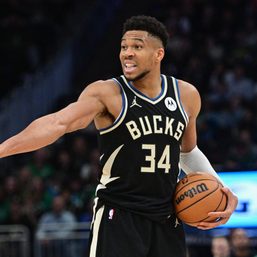
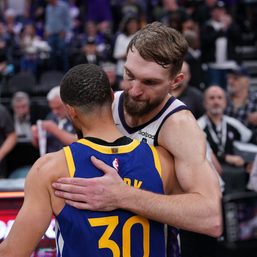
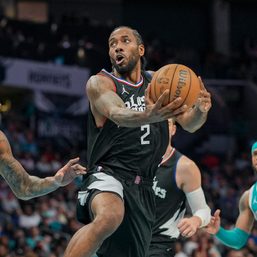
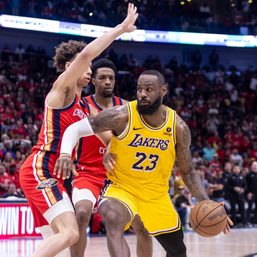
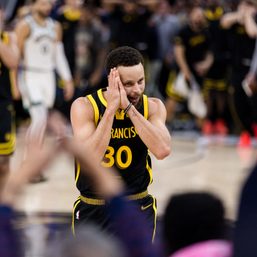
There are no comments yet. Add your comment to start the conversation.